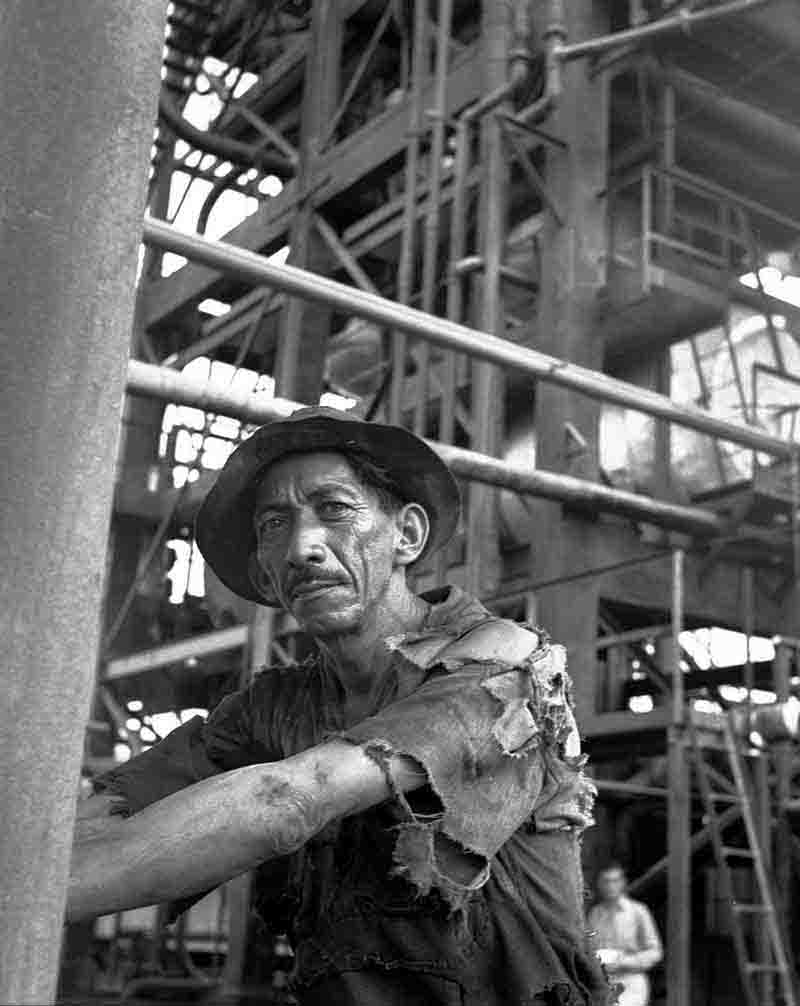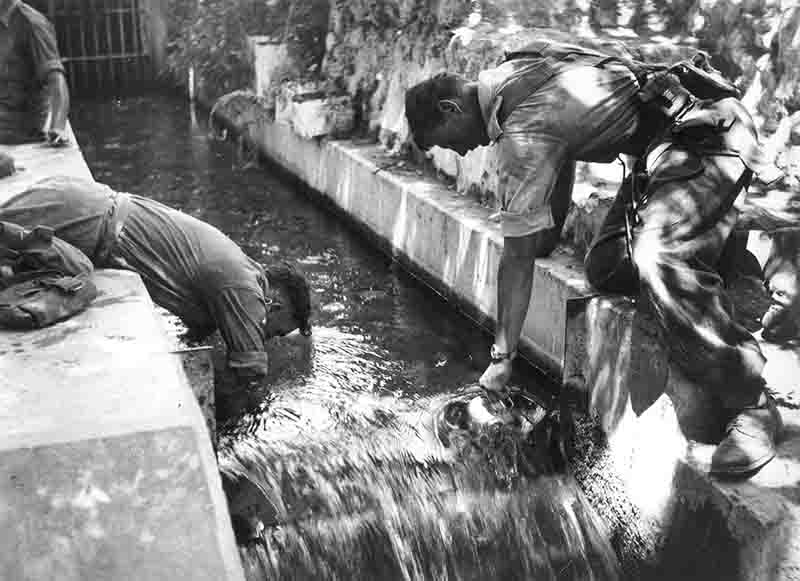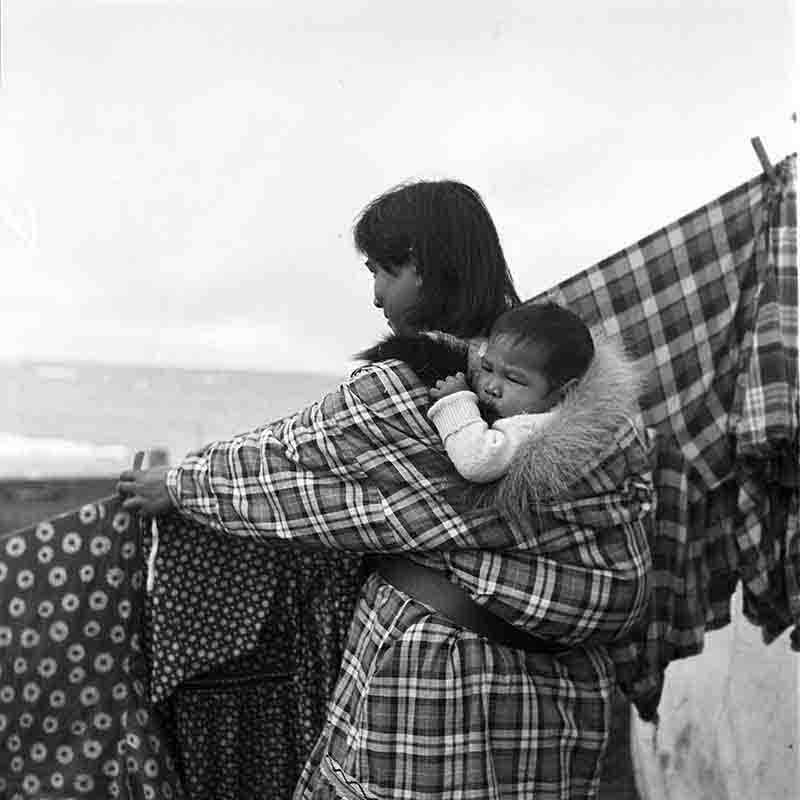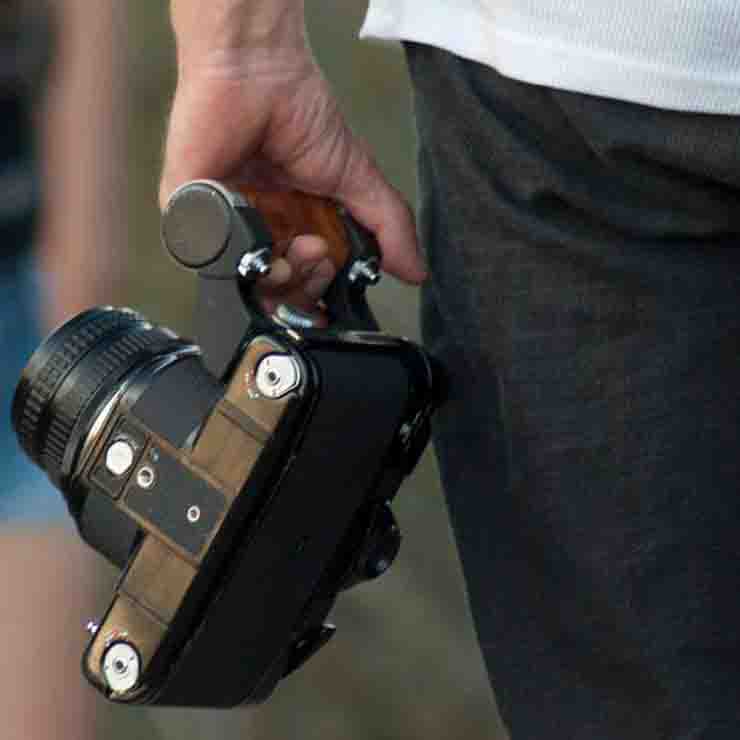The Value of Vintage Prints: A Collector’s Perspective
Vintage prints hold a special place in the world of photography and collecting. They are more than just fine art photographs; they are pieces of history, capturing moments that tell stories from the past.

Vintage prints are valued for their historical authenticity, rarity, and unique visual qualities.
A Vintage Print is an original photographic print that was produced at or near the time the photograph was taken.
Photo collectors and experts look at factors like the photographer's original intent, the materials used, and the analog darkroom printing technique to authenticate a vintage print.
Popular processes for vintage prints are silver gelatin, albumen and platinum prints, each of which offer different qualities in terms of texture, tonal range and durability.
An important detail to bear in mind for every serious photo collection is that a genuine vintage print must have been printed before 1980.
This timeframe distinguishes true vintage prints from later reproductions or reprints.
12 key facts about Vintage Prints
-
Printed Before 1980: A genuine vintage print must have been created before 1980, which marks the transition to digital photography. This timeframe distinguishes authentic vintage prints from modern reproductions.
-
Original Prints, Not Reproductions: Vintage prints are originals made by or under the supervision of the photographer shortly after the photo was taken, often using analog methods like darkroom printing. They are not reprints or modern reproductions.
-
Analog Printing Techniques: Common printing processes for vintage prints include silver gelatin, albumen, and platinum prints. Each of these analog techniques produces distinct visual qualities, from rich blacks in silver gelatin prints to the soft tones in albumen prints.
-
Film-Based Photography: Vintage prints were made from film negatives, using manual darkroom enlarge techniques. Film photography was the dominant medium until digital photography became mainstream.
-
Unique Aging Characteristics: Over time, vintage prints can develop natural signs of aging, such as yellowing, fading, or patina. These characteristics can enhance the historical value of a print if well-preserved.
-
Paper and Material Matter: The type of paper used plays a significant role in identifying and authenticating vintage prints. For example, older prints often used fiber-based paper, while later prints might use resin-coated paper.
-
Provenance Adds Value: A print’s provenance, or documented history of ownership, is crucial. If a vintage print has a clear and reputable ownership record, especially from a notable estate, collector or institution, its value increases significantly.
-
Condition Affects Value: The condition of a vintage print is a key factor in determining its market value. Prints with minimal damage, fading, or wear are more valuable than those with heavy deterioration.
-
Photographer’s Edition Size: Limited edition prints made by the photographer are highly prized. Some photographers produced only a few prints from a negative, making these limited runs more valuable to collectors.
-
Authentication and Appraisal: Vintage prints require expert authentication to determine their originality and age. Authentication involves examining the print’s materials, process, and condition. Appraisal helps determine its market value.
-
Restoration Can Preserve Value: Damaged prints can be restored to a certain extent, but proper restoration methods must be used to maintain authenticity. Cleaning, repairing tears, and stabilizing the image help preserve the print’s longevity
-
Environmental Factors Affect Longevity: Exposure to light, humidity, and temperature fluctuations can degrade vintage prints. Proper storage and display in controlled environments are essential to preserve their quality over time.
These facts highlight what makes vintage prints unique and valuable, both as historical artifacts and as collectible works of art.
Vintage Print: Timeline
In the 20th century, photography began to democratize with the introduction of roll film and consumer cameras, allowing more people to create and share images.
Vintage prints became treasured collectibles as photography turned into a recognized art form, celebrated for its ability to capture moments in time.
Today, vintage prints are highly valued by collectors and enthusiasts, not just for their aesthetic qualities, but also for the stories they tell about the past and the history of photography itself.
| Year | Milestone |
|---|---|
| 1826 | The first permanent photograph, "View from the Window at Le Gras," is created by Joseph Nicéphore Niépce using a process called heliography. |
| 1839 | Louis Daguerre introduces the daguerreotype, the first commercially successful photographic process, leading to the popularization of photography. |
| 1841 | William Henry Fox Talbot patents the calotype process, which allows for multiple prints from a single negative, marking a significant advancement in photographic technology. |
| 1851 | Frederick Scott Archer invents the wet plate collodion process, enabling finer detail and shorter exposure times, leading to the rise of portrait studios. |
| 1856 | The first commercial collotype process is introduced, allowing for high-quality prints that reproduce subtle tonal variations. |
| 1860s | The albumen print process becomes popular, utilizing egg whites to create glossy photographic prints from glass negatives. |
| 1880s | Platinum printing becomes a preferred method for photographers, known for its rich tonal range and durability compared to previous methods. |
| 1890 | The first Kodak camera is introduced, revolutionizing photography by making it accessible to the general public. This leads to a boom in amateur photography. |
| 1900 | The invention of the first roll film camera by Kodak promotes the popularity of snapshot photography, contributing to the mass production of prints. |
| 1907 | The first color process, Autochrome, is developed, introducing color photography to the public and expanding the range of print styles. |
| 1920s | The rise of pictorialism influences printmaking styles, with a focus on artistic expression and soft focus techniques in photography. |
| 1930s | The introduction of the gelatin silver print becomes the dominant method for producing black and white photographs, known for its clarity and detail. |
| 1940s | The photojournalism movement emerges, using vintage prints to document historical events such as World War II, elevating the status of photography as an art form. |
| 1950s | The popularity of large-format cameras and fine art photography leads to a resurgence of interest in traditional printing techniques, including platinum and gelatin silver prints. |
| 1970s | The advent of instant photography with Polaroid cameras changes the landscape of printmaking, allowing for immediate prints and altering the perception of photography. |
| 1980s | The rise of digital photography begins to overshadow traditional methods, though vintage print techniques remain cherished by artists and collectors. |
| 1990s | A renewed interest in analog photography and vintage printing techniques develops among artists and collectors, leading to workshops and education on traditional methods. |
| 2000s | Digital printing technology advances, prompting discussions about authenticity and value in photography, while vintage prints gain attention for their historical significance. |
| 2010s | The resurgence of analog photography culture emerges, with young photographers experimenting with vintage techniques and styles, leading to increased appreciation for vintage prints. |
| 2020s | Vintage prints become a popular collectible item, with online marketplaces and social media fostering communities around vintage photography and print collecting. |
This timeline highlights the key events and advancements that have shaped the history of vintage prints, illustrating the evolution of photography from its early beginnings to its current status as a valued art form.
Vintage Prints: Significance and Value

A vintage print is a photographic print made from the original negative, created before 1980. This timeframe is crucial, as it marks the shift from analog to digital photography.
Definition of Vintage Print
A vintage print is a photographic print that has been made from an original negative and created before 1980.
This distinction is critical because it highlights the transition from analog to digital photography.
In essence, a vintage print must come from a time when photography relied on chemical processes, manual techniques, and a level of craftsmanship that is often missing in today’s mass-produced images.
Characteristics of Vintage Prints

A vintage print is more than just a picture. It’s a connection to the past—authentic, rare, and timeless.
Vintage prints possess distinctive qualities that set them apart from modern photographs.
One of the most notable features is the texture.
Many vintage prints, especially those made with silver gelatin or albumen techniques, have a tactile feel that can evoke nostalgia.
The tonal range in these prints showcases deep blacks and soft whites, giving them a sense of depth that digital prints lack.
Color is another defining aspect. Vintage color prints may exhibit unique color shifts, a result of the aging process.
This can add character and a sense of authenticity. Each print has its own story told through its imperfections, fading, or unique color saturation.
Collectors appreciate these characteristics, as they offer a glimpse into the past and the techniques used by photographers of that era.
Types of Vintage Prints
Several printing techniques have defined the world of vintage photography.
Each method contributes its unique characteristics to the final print. Understanding these techniques can enhance appreciation for the artistry involved.
-
Silver Gelatin Prints: These prints are made using gelatin silver processes, which have been a staple in photography since the late 19th century. They are known for their sharp detail and rich tonal range. Photographers often favor this technique for black-and-white images.
-
Albumen Prints: This technique involves using egg whites to bind the photographic emulsion to paper. Albumen prints are characterized by their glossy surface and soft tonal qualities. They were widely used in the mid-19th century and remain popular among collectors.
-
Platinum Prints: Valued for their exceptional tonal range and durability, platinum prints are made using a complex process that involves light-sensitive platinum salts. These prints are known for their subtle, velvety appearance and have a loyal following among photography enthusiasts.
-
Cyanotypes: This unique printing process produces distinctive blue-toned images. Invented in the 19th century, cyanotypes are known for their affordability and ease of use. They have gained popularity in artistic circles for their striking color and artistic versatility.
Distinguishing Features

Vintage prints are not just duplicates but are expressions of the photographer's original artistic intent.
Identifying different types of vintage prints requires attention to detail.
Each printing technique leaves its mark on the final product.
For example, silver gelatin prints often exhibit a matte or semi-matte surface, while albumen prints shine with a glossy finish.
Collectors learn to recognize these nuances, as they can reveal a print’s history and authenticity.
Additionally, the aging process adds its own unique touch.
Vintage prints may show signs of wear, such as fading or yellowing.
These imperfections tell a story, giving each print its character and appeal.
A collector’s eye for these details can significantly impact the valuation and appreciation of a print.
Market Value of Vintage Prints
Understanding what affects the market value of vintage prints is crucial for collectors and enthusiasts.
Several factors come into play when determining the worth of a vintage print.
-
Rarity: Limited editions or unique prints often command higher prices. The fewer available, the more desirable they become. If a print is part of a small run or has unique characteristics, collectors may be willing to pay a premium.
-
Condition: The physical state of the print is vital in assessing its value. Prints in excellent condition, free from fading, creases, or other damage, will be more valuable. Buyers should always consider the condition when evaluating a print.
-
Provenance: A clear history of ownership can enhance a print's value. If a print was once owned by a famous photographer or was part of a notable collection, it can significantly increase its worth. Collectors often seek documentation to support provenance claims.
Appraisal and Authentication

Because they are rare, authentic, and closely tied to the original creation of the photograph, vintage prints carry significant value in the art world.
Getting a vintage print appraised is an essential step for collectors.
Professional appraisals help establish a print’s market value based on current trends and conditions.
An experienced appraiser can provide insight into the print’s quality and historical context.
Authentication is equally important, as it determines whether a print is genuine or a reproduction.
Knowing the distinguishing features of various printing techniques can help in this process.
An expert can identify characteristics specific to original prints, guiding collectors away from potential fakes.
Authentication of vintage prints is a multifaceted process that combines art historical knowledge with technical analysis.
Each technique plays a vital role in constructing a comprehensive picture of a print’s authenticity.
Thorough approach not only protects the integrity of the photography art market but also preserves the stories and cultural significance encapsulated in vintage prints.
-
Surface Characteristics: Photo experts start with a close visual inspection of the print's surface. Genuine vintage prints may exhibit characteristics such as a certain texture or sheen due to the printing process used (like silver gelatin or lithography). In contrast, reproductions often have a more uniform, synthetic appearance.
-
Color and Tonality: The color reproduction in vintage prints tends to be more muted and less saturated than modern prints. Examining the gradation of tones can help identify prints that may have been produced digitally or with modern inks.
-
Paper Type: The type of paper used can be a significant indicator of authenticity. Vintage prints are often printed on specific types of paper that were prevalent during the time of their creation, such as fiber-based or semi-gloss paper. Experts conduct tests to identify the paper's composition and age.
-
Chemical Composition: Analytical techniques like Fourier Transform Infrared Spectroscopy (FTIR) can identify the chemical composition of the print’s materials, including the type of inks used. This analysis can determine if the inks correspond to those used during the period the print was made.
-
Print Type Identification: Understanding the specific printing technique used is essential. Techniques such as gelatin silver printing, photogravure, or lithography each leave unique marks on the print. For example, a genuine gelatin silver print may show a characteristic silver sheen, while a lithograph may have a distinct dot pattern.
-
Documentation Review: Provenance refers to the history of ownership of a print. Authentic prints often come with a documented history that can include receipts, gallery labels, or previous auction records. Reviewing this documentation can provide insight into the print's authenticity.
-
X-ray and Infrared Imaging: These non-invasive imaging techniques can reveal hidden layers in a print, such as underdrawings or changes made by the artist. For example, a vintage print may show signs of the artist’s original intention that are not visible to the naked eye.
-
Ultraviolet Light Examination: Some inks and papers react differently under UV light. Experts can use this to see how a print was made and whether the materials used are consistent with those from the period it claims to be from.
-
Artist Signatures: Original prints are often signed by the artist. Analyzing the signature's style, placement, and ink can reveal if it is consistent with the artist's known works. The date of the signature is also compared to the estimated production date of the print.
-
Age-Related Wear: Genuine vintage prints may show signs of age, such as yellowing or slight fading, which can be indicators of authenticity. Conversely, a print that appears too pristine might be suspect. Experts evaluate the overall condition and look for inconsistencies that might suggest it is a reproduction.
-
Edge and Corner Examination: Vintage prints often exhibit wear along the edges or corners. This wear is indicative of their age and can help differentiate them from newer reproductions, which typically lack such characteristics.
-
Researching Historical References: Understanding the context in which a print was created is crucial. Experts may research the artist, the time period, and the style to verify that the print fits within the known history of that artist’s work. If the print claims to be from a specific time or movement but does not align with established historical facts, it may be a fake.
By combining visual inspections, material analyses, provenance verification, and advanced imaging techniques, experts can effectively distinguish genuine vintage prints from fakes, ensuring that collectors and enthusiasts can trust their acquisitions.
Importance of Preservation

Whether it’s an iconic portrait or a rare landscape, a vintage print preserves the artistic choices of the time—everything from the paper type to the printing techniques used.
Preserving vintage prints is crucial for maintaining their quality and longevity.
Environmental factors can significantly impact a print’s condition over time.
Light exposure, humidity, and temperature all play a role in the deterioration process.
Collectors should store prints in cool, dry places, away from direct sunlight.
Proper framing with UV-protective glass can also help shield prints from harmful light exposure.
Regular inspections are essential to identify any signs of damage early on.
Restoration Techniques
Restoration of vintage prints requires specialized knowledge and skill.
Some minor damage can be addressed at home, such as cleaning dust or dirt with a soft brush.
However, significant damage should be left to professionals who can restore prints without compromising their integrity.
Professionals use various techniques to repair vintage prints, including:
-
Cleaning: Using gentle solutions to remove surface dirt and grime without damaging the print.
-
Tears and Creases: Specialized methods to mend tears and flatten creased areas without leaving a trace.
It’s essential for collectors to weigh the pros and cons of restoration. While restoring a print can enhance its appearance, overzealous restoration can lead to loss of value if not done carefully.
Historical Context

Vintage Prints are made using traditional darkroom techniques, with no digital interventions.
Vintage prints serve as visual records of history. They document important events, cultural shifts, and everyday life, providing insights into the past.
Each print tells a story, whether it’s a candid shot of street life or a posed portrait of a notable figure.
Photographers like Walker Evans, Peter Bock-Schoeder and Dorothea Lange used their skill to address social issues, capture the human experience, and influence public perception.
Vintage prints from these photographers carry not only artistic value but also cultural significance.
Collecting Vintage Prints
Collecting vintage prints has become a popular passion and investment strategy for many.
Enthusiasts appreciate the historical and artistic value of these pieces.
Collecting allows individuals to own a piece of history and support the preservation of photography as an art form.
Where to Find Vintage Prints
Finding vintage prints can be a treasure hunt. Various venues offer opportunities to discover unique pieces.
Auctions and galleries often feature collections from renowned photographers.
Online fine art photography marketplaces provide access to a vast array of prints, allowing collectors to explore from the comfort of their homes.
Attending local art fairs and exhibitions can also yield exciting finds.
These events often showcase emerging photographers alongside vintage works.
Connecting with artists and collectors can lead to valuable opportunities.
Questions to Ask When Purchasing
Before buying a vintage print, it’s essential to ask the right questions.
Inquire about the print’s history and provenance. Understanding the background can provide insights into its value and significance.
Always assess the seller's credibility. Look for reviews or references, especially when purchasing online.
Confirm the print’s authenticity, and don’t hesitate to ask for documentation.
A reputable seller should be willing to provide proof of authenticity.
Vintage prints from the Bock-Schroeder collection come with a certified COA (Certificate of Authenticity) and a corresponding registration document published on the Bock-Schroeder website. Collectors can access their listings through password protected access.
Vintage prints are more than just photographs; they encapsulate moments, emotions, and stories from bygone eras that shaped history.
Understanding their characteristics, market value, preservation needs, and cultural significance enriches the experience of collecting and appreciating these pieces.
Vintage prints offers endless opportunities for exploration and appreciation.
-
Vintage Photography: Vintage photography refers to photographs taken during earlier eras, before the 1980s, that capture historical moments, everyday life, and significant events. These images showcase the styles, techniques, and cultural contexts of their time, offering a glimpse into the past.
-
Antique Prints: Antique prints are older images created through traditional printing techniques, often dating back several centuries. They can include engravings, lithographs, and etchings, and are prized for their artistic and historical value, serving as a representation of the art movements of their respective periods.
-
Historical Prints: Historical prints document important events, figures, or cultural phenomena from the past. They serve as visual records, allowing viewers to connect with history in a tangible way. Collectors and historians often seek these prints for their educational and archival significance.
-
Classic Photography: Classic photography refers to styles and techniques that have stood the test of time, often characterized by their composition, lighting, and subject matter. Classic photographers are revered for their contributions to the photographic art form and their lasting influence on modern photography.
-
Collectible Prints: Collectible prints are artworks that hold value for collectors, whether due to their rarity, historical significance, or the reputation of the artist. Vintage prints fall into this category, as many collectors seek out specific artists or styles to complete their collections.
-
Printmaking Techniques: Printmaking techniques encompass various methods used to create images on paper, including engraving, etching, lithography, and screen printing. Each technique has its own unique qualities and historical significance, contributing to the diverse world of vintage prints.
-
Analog Prints: Analog prints are photographs created using traditional film photography processes, as opposed to digital methods. This term often refers to prints developed in a darkroom, retaining the unique qualities associated with film, such as grain and depth of field.
-
Authentic Prints: Authentic prints are original pieces verified by experts as genuine, rather than reproductions or fakes. The authenticity of a vintage print can significantly influence its value and desirability in the art market.
Why Vintage Prints Are Essential for Any Collection
Vintage prints are not just photographs; they are windows into the past, offering glimpses of moments that shaped history.
By appreciating and collecting vintage photography, we can honor the art form and its evolution.
Whether you're a seasoned collector or just starting, consider exploring the fascinating world of vintage prints.
Vintage Print: FAQ
